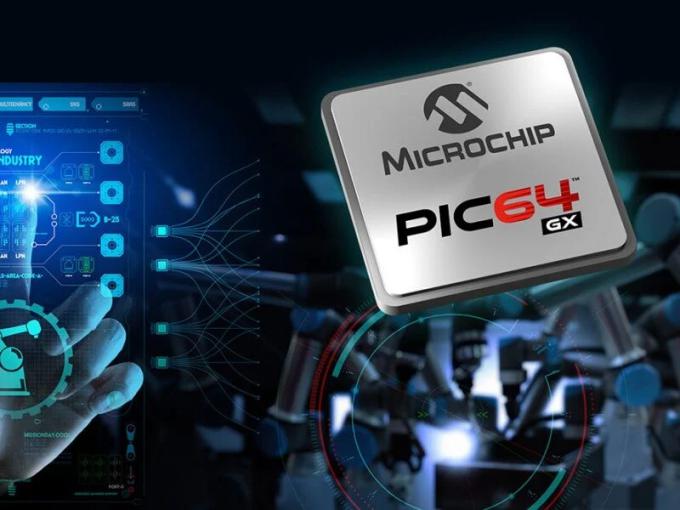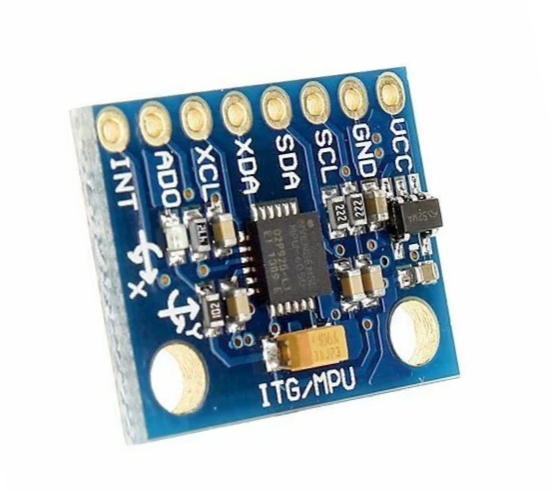Microchip's PIC64 Series: Embracing the 64-bit MPU Era
With the advancement of technology and the increasing demands of the market, embedded systems are requiring more processing power. The application fields of Microprocessor Units (MPUs) continue to expand, covering industrial control, smart home, medical electronics, and automotive electronics, among others. As a leader in embedded solutions, Microchip Technology Inc. has recently launched its first new PIC64 series of products, marking the official entry of its MPUs into the 64-bit era.

Microchip's Foray into 64-bit MPU
Microchip has recently introduced the PIC64GX MPU, its first 64-bit MPU product. This MPU not only meets the needs of real-time computationally intensive applications such as intelligent embedded vision and machine learning but also provides robust support for industries such as industrial, automotive, communications, IoT, aerospace, and defense. The introduction of the PIC64GX MPU further expands Microchip's product line, enabling it to offer a full range of computing solutions from low-end to high-end.
Core Features of Microchip's 64-bit MPUs
1. PIC64GX MPU
The PIC64GX MPU features a 64-bit RISC-V quad-core processor with Asymmetric Multi-Processing (AMP) and deterministic latency. This design allows for the simultaneous operation of Linux, real time operating systems, and bare-metal within a single processor cluster, meeting the needs of asymmetric processing functions for intelligent edges. The PIC64GX series is pin-compatible with Microchip's PolarFire SoC FPGA devices, offering great flexibility for the development of embedded solutions. Moreover, as the first RISC-V multi-core solution with AMP capabilities, the PIC64GX MPU provides strong support for mixed-criticality systems.
2. PIC64-HPSC MPU
Microchip plans to introduce the PIC64 High-Performance Space Computing (PIC64-HPSC) series, which will provide higher computational performance and radiation resistance for aerospace and defense applications. It is reported that NASA's Jet Propulsion Laboratory (NASA-JPL) has chosen Microchip to develop HPSC processors, indicating that the space industry is also entering a new era of autonomous space computing.
Convergence of MCU and MPU Performance
By definition, there is still a certain difference between MCU (Microcontroller Unit) and MPU (Microprocessor Unit). MCUs are characterized by high integration, suitable for low-cost embedded systems, and generally run simple real-time operating systems such as RTOS. On the other hand, MPUs have stronger computational performance and can be used to run complex tasks and operating systems like Linux.
However, due to changes in process technology and the demand for application integration, under the requirements of low power consumption, low cost, and high performance, MCUs are also becoming more like MPUs. For example, NXP's i.MX RT 1050, which has a larger RAM and a more powerful CPU. NXP has also launched the S32N55 processor, which uses a 5nm process and integrates 48MB of SRAM, although it is called a processor, its overall characteristics are still very similar to those of an MCU.
Market Trend of 64-bit MPU
With the rapid development of technologies such as intelligence and the Internet of Things, the application fields of MPUs are also continuously expanding, now covering industrial control, smart home, medical electronics, and automotive electronics, among other areas. Compared with 32-bit MPUs, 64-bit MPUs have more powerful processing capabilities, can support larger memory address spaces, provide higher operational speeds, and more efficient data processing capabilities. In addition, 64-bit MPUs are usually equipped with more advanced security features, such as hardware encryption and secure boot, which help protect industrial systems from attacks and ensure data integrity.
Conclusion
High-performance MPU or MCU will continue to bring more efficient, safer, and more reliable support for future intelligent edge computing. With the widespread application of 64-bit technology, we will see more new innovative applications in the field of embedded systems. Microchip's PIC64 series is a representative of this trend, showcasing the strong potential and application prospects of MPUs in the 64-bit era. With the continuous advancement of technology and the growing demand of the market, 64-bit MPUs are gradually becoming the mainstream trend in the industry. It is expected that in the next few years, 64-bit MPUs will be widely applied in more fields, and some specific application scenarios may still use 32-bit MPUs to meet specific needs.
Electronic IC Components
● The HI-8787PQI is a 16-bit serial IO/ data communication controller designed to convert 16-bit parallel data into serial data in ARINC 429, 575, and 561 data formats, which are widely used in avionics systems. The controller can automatically convert 16-bit parallel data to serial data. It is especially suitable for systems requiring high-speed data transmission and processing.
● The TCAN1042VDRQ1 is a CAN transceiver manufactured by Texas Instruments. Support high-speed CAN communication, data transmission rate can reach 1Mbps. It has a variety of fault protection functions, including bus fault protection, overvoltage protection and undervoltage protection, to ensure the reliability and stability of the system. It is often used in automotive electronics, industrial automation, building automation and other fields to realize CAN bus communication and realize data exchange and communication between nodes.
● The ADXL357BEZ is a low-noise, low-drift, low-power 3-axis MEMS accelerometer with digital output manufactured by Analog Devices. It is suitable for battery-powered applications with a low power consumption mode.
Website: www.conevoelec.com
Email: info@conevoelec.com








